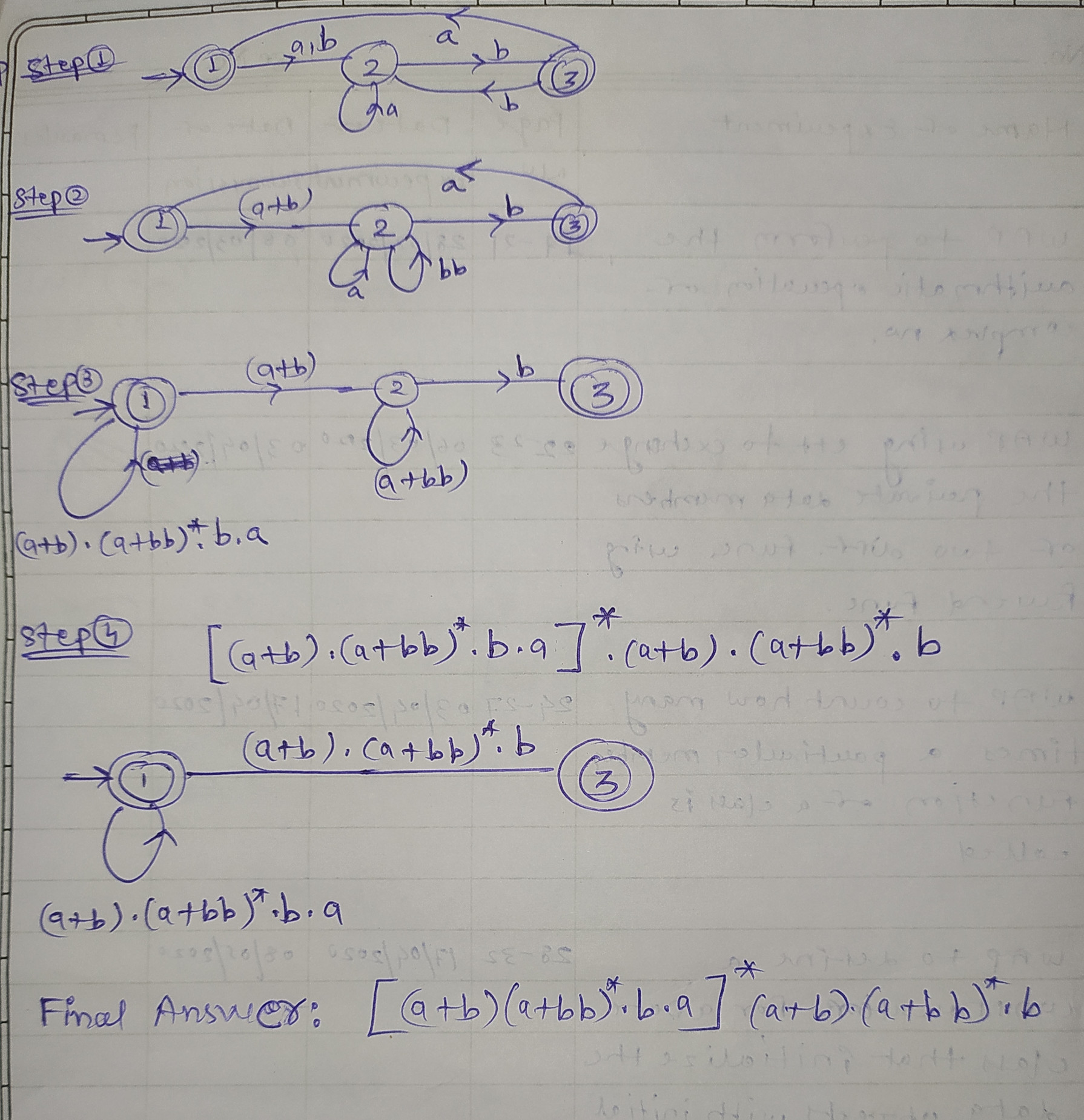State Elimination Method:
Step-01: “The initial state of the DFA must not have any incoming edge.” means If there exists any incoming edge to the initial state, then create a new initial state having no incoming edge to it.
Step-02: “There must exist only one final state in the DFA.” means If there exists multiple final states in the DFA, then convert all the final states into non-final states and create a new single final state.
Step-03: “The final state of the DFA must not have any outgoing edge.”
If there exists any outgoing edge from the final state, then create a new final state having no outgoing edge from it.
Step-04:
- Eliminate all the intermediate states one by one.
- These states may be eliminated in any order.
In the end,
- Only an initial state going to the final state will be left.
- The cost of this transition is the required regular expression.
NOTE:
The state elimination method can be applied to any finite automata.
(NFA, ∈-NFA, DFA etc)
By following above step we can get ans
while understanding below solution keep in mind that while solving i not followed the same order of steps which are written above .
if you find it helpfull , upvote it .
in final ans : [(a+b)(a+bb)ba]*.(a+b).(a+bb)*.b + €
bcoz here initial state is final state.
